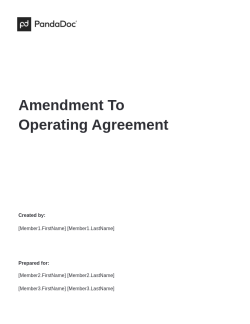What is a Bill of Sale?
A bill of sale is a legal document that proves a transaction has taken place. It has two purposes:
- To confirm who now has ownership of the item
- To document the terms of the contract of sale
The document itself is relatively simple, laying out the basic information about the transaction and participants. It very rarely spans more than one page, and half a page is more common.
Bills of sale are most often used to document sales of high-value items like cars, boats, or firearms. That said, you can use a bill of sale any time a buyer or seller requests one, even if the item has a lower value. If there’s any chance that a buyer or seller might question the validity of the sale, a bill of sale can serve as a safeguard.
A bill of sale includes any of the information that might be needed to identify the item being sold, the identity of the buyer, and the identity of the seller. That typically means the full legal name and address of both buyer and seller and any data that distinguishes the item itself.
For example, an auto bill of sale usually includes the make, model, and year of the car in addition to its identification number and odometer reading. It also includes the purchase price, the date of sale, and any warranty that the seller has agreed to offer the buyer.
A firearm bill of sale in California includes all of the information about the firearm’s make, model, caliber, and type, as well as the serial information for the individual gun. It also includes information about the transaction type, the transaction and delivery date, and whether you bought the firearm at a gun show.
Because guns are regulated at the state level as well as the federal level in the US, bills of sale can look very different depending on where you buy. If you buy in one of the states that have waiting periods for gun buyers, you’ll see fields on the bill of sale where you can indicate exemptions.
Many other items will have state-specific regulations and requirements, so you’ll have to review your state’s laws to ensure your bill of sale has all the right information.
What Can You Use a Bill of Sale For?
You can use a bill of sale to document the buying and selling of any type of goods. You’re more likely to need or want a bill of sale when you’re dealing with a high-value item, but you always have the right to request or offer one.
How Do You Write a Bill of Sale?
Step 1: Determine Which Bill of Sale You Need
The kind of bill of sale you need will depend on two things:
- What you’re selling or buying
- Where the transaction takes place
The nature of the item is the most important thing. It determines what information you need to include in the bill of sale. Once you’ve determined what you’re buying or selling — car, boat, horse, private plane, etc. — you can find out whether you need a different bill of sale depending on your state.
For many items, you can use a standard bill of sale template and adjust it to your purposes. In other cases, as with a vehicle bill of sale or firearm bill of sale, the requirements may be item-specific and vary from state to state. If you’re selling something that doesn’t have its own bill of sale form, as when the item is lower-value and doesn’t usually call for a bill of sale, you can use a standard form.
Step 2: Get a Printable Bill of Sale
No matter where you’re located in the USA, you can use PandaDoc to create your own bill of sale that aligns with state and local laws.
At the top of this page, find the name of the state where you’re buying or selling the item. Click on the link and look for the bill of sale that’s most relevant to your transaction. You can view it in-screen and even start filling in your information before printing it out.
Your template should show all of the information that you need for your bill of sale to be legally complete. See if you have all of the data that the template asks for and if not, obtain it.
For example, if you’re selling a car, you’ll need to enter the odometer reading and the vehicle identification number, more commonly known as a VIN. If you’re selling a gun, you’ll need the serial number, barrel length, and caliber.
Step 4: Obtain Signatures
A bill of sale needs to be signed by the buyer and seller. Expect that the other party, either the buyer or the seller, will want to see the details of the agreement before they sign, and ask them whether they prefer in-person or digital signing.
Signing Details
You have the option to sign the bill of sale traditionally, in person with pen and ink, or online using eSignature technology. An eSignature, also known as a digital signature, allows you to sign the document remotely but securely and legally.
Digital signatures are legally binding in the United States, but “digital signature” has a certain technical definition. A real digital signature is a coded and encrypted message that’s unique to the signer, just like the person’s handwritten signature is unique.
For that reason, not all electronic signatures are created equal. If you’re signing a bill of sale, make sure that you’re using a certified eSignature provider like PandaDoc.





